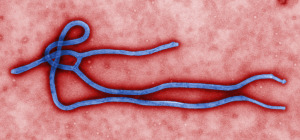The Minnesota Department of Health took to media outlets Thursday with a simple message: Ebola virus in the United States is cause for a concern, but not for mass hysteria.
Due to its limited degree of transferability, Ebola shouldn’t be cause for panic, particularly hundreds of miles away from its source here in the United State – the Dallas/Fort Worth area. However, simple precautions, such as washing hands and keeping close tabs on physical health will curb the threat.
RELATED: Buffalo Hospital Nurse’s Charity Was on Ebola Frontline – North Wright County Today
State health officials say it’s important to keep in mind that the public health system is prepared to respond to this virus, as well as many other emerging diseases.
“While not easily transmittable, Ebola is a serious virus. We know it can be frightening,” said Minnesota Commissioner of Health Dr. Ed Ehlinger. “But there’s a marked difference between Minnesota and parts of Africa where Ebola is spreading. Minnesota has a strong health care system and skilled public health professionals who will make sure a case like this does not threaten our communities.”
The Minnesota Department of Health continues to work with the CDC, local health departments, hospitals and medical facilities to be vigilant for Ebola. MDH has issued guidance to health care facilities and medical professionals on evaluating patients and lab specimen submission. Conducting surveillance for diseases, identifying potential cases, implementing infection control measures and stopping the spread of illness are core public health functions that MDH practices day in and day out, Ehlinger said.
 “We know how to stop Ebola’s spread: thorough case finding, isolation of ill people, contacting people exposed to an ill person, and further isolation of contacts if they develop symptoms,” said Kristen Ehresmann, director of infectious diseases for MDH. “It’s important to remember in this context that Ebola is not spread through the air. It is only spread through contact with blood or body fluid of a person with symptoms of Ebola or who has died from Ebola. If we were to find a case in Minnesota, it would not represent a great public health risk to the general public. But it would be crucial to follow up on all contacts of that person.”
“We know how to stop Ebola’s spread: thorough case finding, isolation of ill people, contacting people exposed to an ill person, and further isolation of contacts if they develop symptoms,” said Kristen Ehresmann, director of infectious diseases for MDH. “It’s important to remember in this context that Ebola is not spread through the air. It is only spread through contact with blood or body fluid of a person with symptoms of Ebola or who has died from Ebola. If we were to find a case in Minnesota, it would not represent a great public health risk to the general public. But it would be crucial to follow up on all contacts of that person.”
The Minnesota public health and medical system has prior experience with this type of rare disease, Ehlinger said. In April 2014, Minnesota had a case of Lassa fever, another type of viral hemorrhagic fever. Contacts were identified and monitored for 21 days. There was no additional disease spread from this case. “Any hospital that has isolation capabilities can treat Ebola,” he said.
Since the outbreak of Ebola in West Africa took hold in July–and even before that–Minnesota’s public health system has been anticipating and preparing for a case of Ebola. MDH has been:
- Enhancing surveillance and laboratory testing capacity to detect cases.
- Providing recommendations for healthcare infection control and other measures to prevent disease spread.
- Disseminating up-to-date information to the general public, international travelers, and public health partners.
“The occurrence of the case in Texas should serve as a reminder to all parts of the public health system to review our protocols and make sure we are following them closely in all situations,” Ehresmann said. “As long as there are cases occurring in Africa, we need to be on our guard–and we will be.”
Get more from North Wright County Today. Follow us on Facebook, on Twitter, or get daily news via your e-mail.